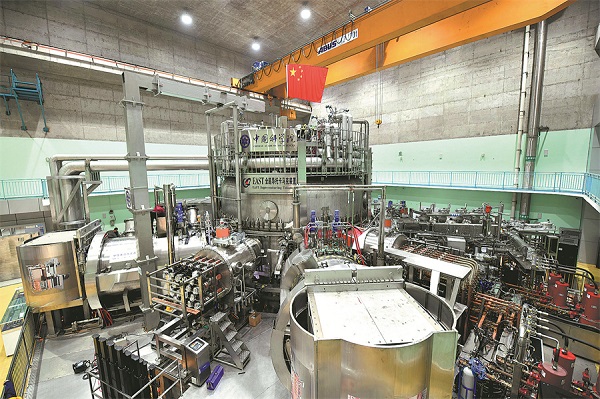'Science city' sees green future become a reality
A view of the experimental advanced superconducting tokamak (EAST), or the Chinese "artificial sun", in Hefei. ZHOU MU/XINHUA
Unlike fossil fuels such as coal, oil and natural gas, which are limited in supply and can have damaging environmental impacts, supplies of the raw materials needed for the operation of the "artificial sun" — tritium and deuterium — are almost unlimited in the world's oceans.
"The energy released during the fusion of the deuterium contained in a liter of seawater is equivalent to the energy in 300 liters of gasoline," Hu said, adding that fusion energy is safer and cleaner than traditional energy sources, and is thus considered the ideal "ultimate energy" for the future of humanity.
EAST, designed and constructed by Chinese scientists, makes China the first country to build such a device on its own. While it may still take years for people to use the energy produced by the facility, some technological improvements have already brought green energy into people's everyday lives.
In April last year, residents of the Taoxi New Village Community in Hefei's Changfeng county began using electricity produced by solar power from photovoltaic panels installed on the roofs of local buildings, which provide a steady stream of clean electricity.
Zhang Ming, general manager of Wanneng Changfeng New Energy, the company that oversees the installation, said the new energy project generates 1 million kilowatt-hours of electricity every year, which helps reduce carbon dioxide emissions by about 1,000 metric tons, equal to the amount of the gas absorbed by over 50,000 trees a year.
The energy produced by the PV panels is enough to meet the needs of the community's residents, with any surplus power generated fed into the public grid, which helps alleviate the pressure on the network during periods of peak power consumption, Zhang said.




